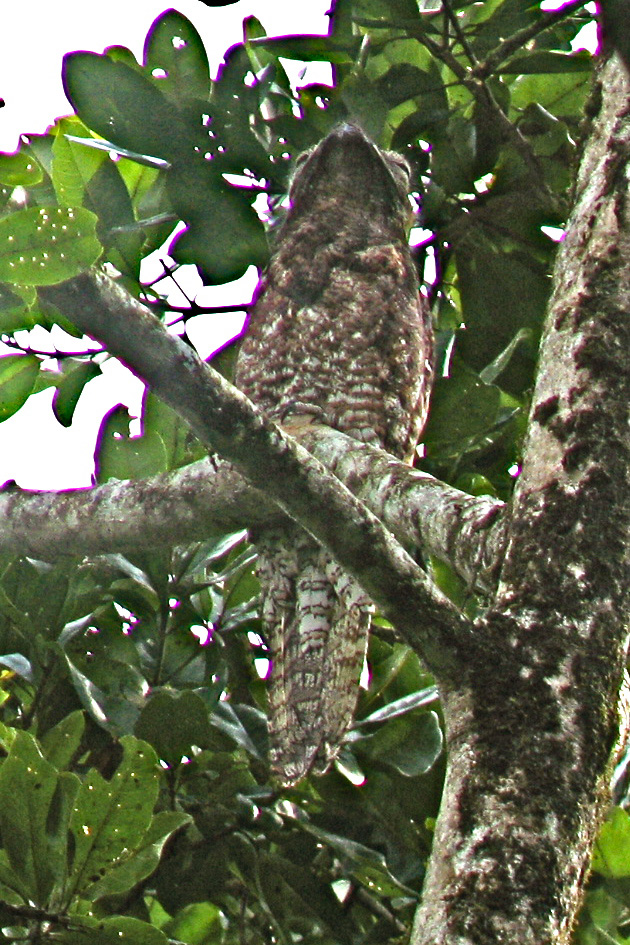…yes, more Great Potoo…
Like most enthusiasts, birders can get excited about seemingly unexciting things. As proof, first there was the Maroon-chested ground-dove, a seriously exciting species that most of my non-birding friends think looks like a “boring” Mourning dove, but was easily one of the most thrilling sightings of the entire Costa Rica trip, which was  full of thrilling sightings. Now, here is the strange, statuesque potoo, a bird so fascinating it can’t be distinguished from a broken branch. I posted yesterday on the Great potoo (Nyctibius grandis), but can’t resist adding more today, including another photo of the same bird.
full of thrilling sightings. Now, here is the strange, statuesque potoo, a bird so fascinating it can’t be distinguished from a broken branch. I posted yesterday on the Great potoo (Nyctibius grandis), but can’t resist adding more today, including another photo of the same bird.
<< Great potoo at La Selva OTS (digiscoped by C.Gómez)
I assure you, this is a different photo — look, the bird’s head has turned a skosh farther to its left, revealing BOTH slitted, bulbous eyes. The action of turning its head so slowly as to be nearly imperceptible is pure Potoo, and it was the most exciting thing the bird “did” while we watched it — in fact, it was the only thing it “did” other than hold perfectly still — thrilling us to the core (for another account of how even seasoned birders lose their cool seeing potoos — I would have sacrificed a finger to see it scratch its face with its foot!– click here). Since this potoo was safely perched high up in the canopy, we were lucky to see it in a fluff-feathered, neutral roosting pose, rather than the usual sleeked-down, beak-pointing alarm pose in which these birds are most often detected.
Those eye slits are part of what makes potoos cool. Each lid has three tiny notch-like folds in it — a so-called “magic eye” — enabling the Potoo to see with its lids shut. Most photos you can find of potoos show them in their diurnal cryptic perching pose, eyes closed. Open, their eyes are owl-like and, in most species, bright yellow. Here’s a link to photographer Michael Fairchild’s site, showing a potoo in mid-blink, with partially open eyes. You can clearly see the notches in the lid-skin: one near each corner, and one over the pupil.
Here’s another exciting Potoo fact, if you can stand it. Their cousins the nightjars have specialized whisker-like feathers at the corner of their mouths called rictal bristles, thought to be used to help catch or detect prey. Not Potoos — they have loral bristles instead; specialized feathers between their nares (nostrils) and eyes, at the base of their bills, like flycatchers and some wood warblers. Pretty amazing, right? Right?
